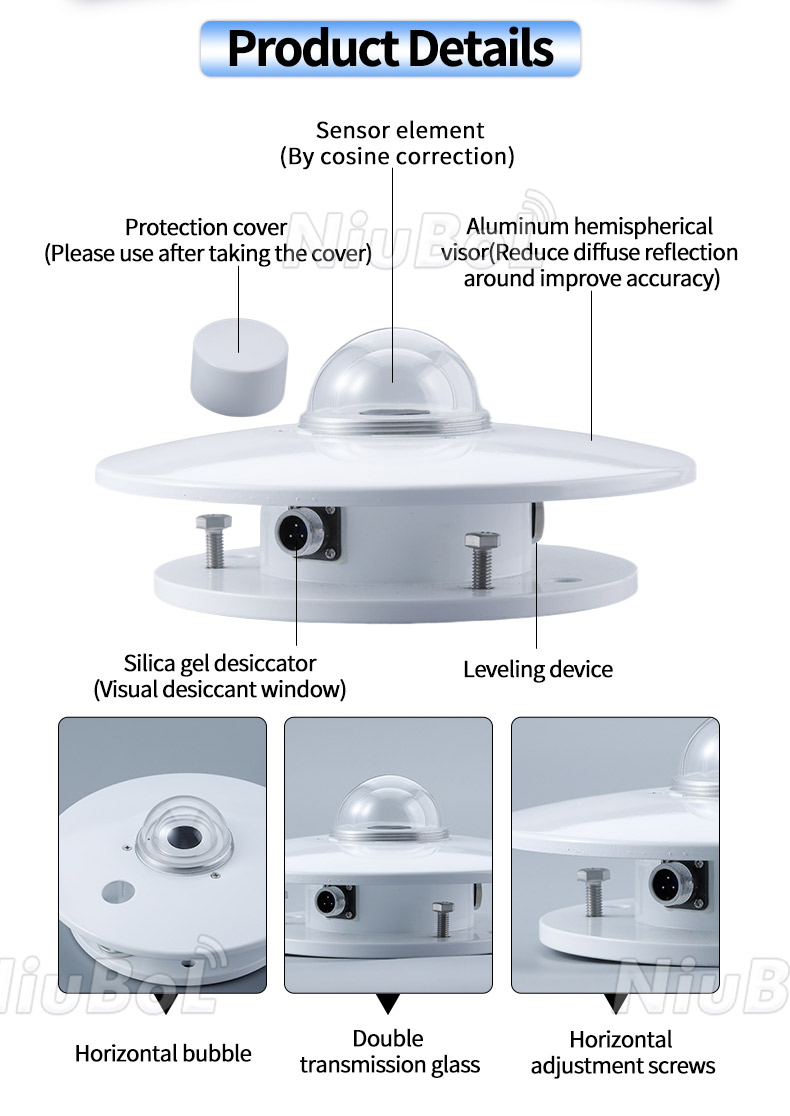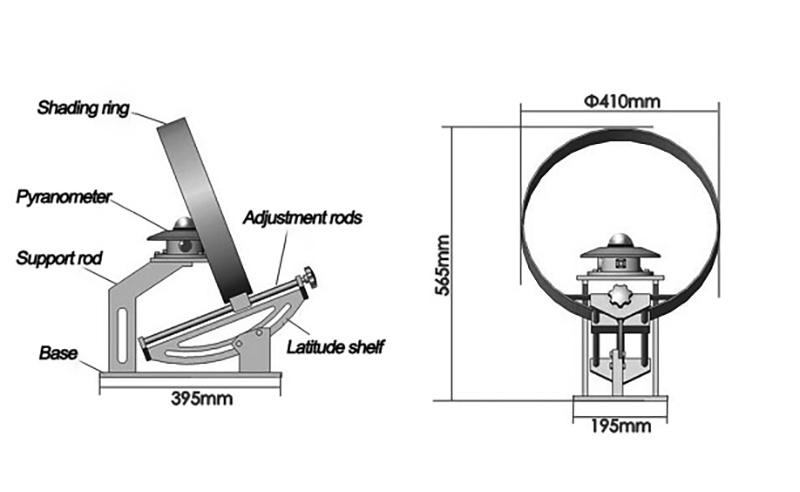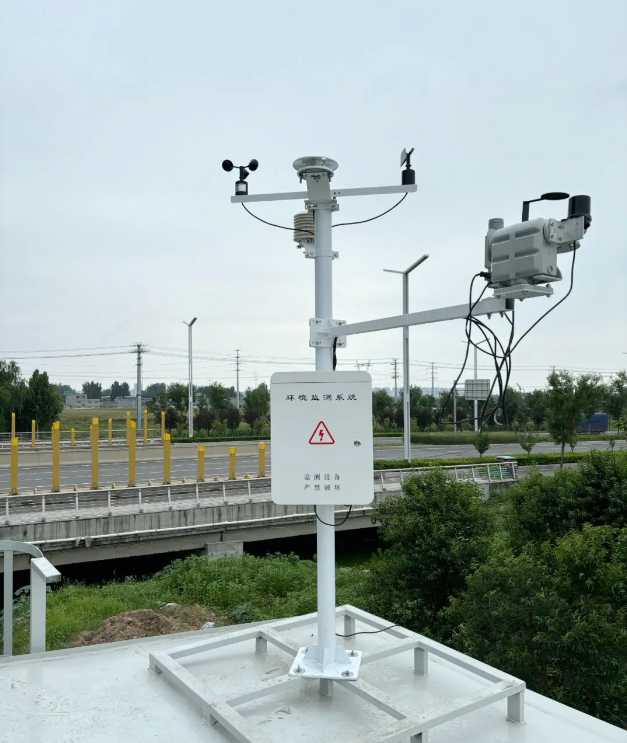

— Blogs —
—Products—
 Consumer hotline +8618073152920
Consumer hotline +8618073152920 WhatsApp:+8615367865107
Address:Room 102, District D, Houhu Industrial Park, Yuelu District, Changsha City, Hunan Province, China
Product knowledge
Time:2024-11-19 15:49:52 Popularity:1438
A Pyranometer (also known as a solar radiation meter or solar radiation sensor) is an instrument used to measure solar radiation, primarily for measuring the total solar radiation on a horizontal surface, including both direct and diffuse radiation. Solar radiation is an essential component of the Earth's energy balance, and its measurement plays a critical role in fields such as meteorology, agriculture, and energy.
- Global Pyranometer: Measures all directions of solar radiation, including both direct and diffuse radiation. Suitable for measuring the total solar radiation.
- Plane Pyranometer: Measures solar radiation on a specific plane, typically the horizontal plane. It captures radiation from certain angles and provides an accurate value.
- Direct Pyranometer: Measures only the solar radiation that is directly incident from the sun onto the sensor surface. This type is commonly used for studying the direct effects of sunlight.
- Diffuse Pyranometer: Measures the solar radiation scattered or reflected from the sky to the sensor from all directions. This type is useful for evaluating the scattering effects of clouds, aerosols, etc.

- Thermopile Pyranometer: Uses a thermopile sensor to detect radiation. This is the most common type and is typically used for long-term measurements, offering high energy conversion efficiency and strong adaptability.
- Photovoltaic Pyranometer: Based on the photovoltaic effect (generation of electrical current by light), this sensor is faster and more suitable for short-term or instantaneous measurements.
- Standard Range Pyranometer: Suitable for measurements in most standard temperature conditions.
- High-Temperature Pyranometer: Designed for high-temperature environments, commonly used in industrial and high-temperature meteorological research fields.
- Low-Temperature Pyranometer: Designed for extreme cold environments, typically used for radiation measurements in polar or high-altitude regions.
- Fixed Pyranometer: Typically mounted on a fixed base or structure for long-term monitoring of solar radiation at a specific location.
- Mobile Pyranometer: Designed for easy movement and adjustment of position, ideal for flexible measurements across different areas.
- Light-sensitive element: A Pyranometer typically contains a light-sensitive element, usually made of semiconductor material.
- Current and light intensity relationship: When sunlight strikes this semiconductor material, photons excite electrons within the material, generating a current. The magnitude of the current is proportional to the intensity of the light.
- Optical filters: To enhance measurement accuracy, some Pyranometers include optical filters that select the appropriate wavelength range to measure solar radiation only within a specific spectrum.
- Thermal detector: Another common principle for Pyranometers involves thermal detectors, which absorb radiation and convert it into heat energy.
- Temperature change and radiation relationship: When solar radiation hits the thermal detector, it raises the temperature of the sensor. By measuring this temperature change, the intensity of solar radiation can be determined.
- Types of thermal detectors: Thermal detectors include thermocouples, thermopiles, and resistance-based radiometers, each with slightly different working principles, but all are based on the thermal effect to measure solar radiation.

- Meteorological Observations: Used to monitor solar radiation intensity, providing data support for weather forecasting and climate change research.
- Solar Power Generation: In solar power plants, Pyranometers assess the potential of solar energy and the efficiency of power generation.
- Building and Agriculture: Pyranometers are used to evaluate the impact of solar radiation on buildings and crops.
- Climate Research: Provide precise solar radiation data, helping scientists understand climate change.
- Energy Management: In solar power plants, Pyranometers monitor solar radiation intensity to optimize the layout and efficiency of photovoltaic panels.
- Building Design: Evaluate the sunlight conditions for buildings, aiding in energy-efficient design.
- Agricultural Applications: Control light levels in greenhouses to enhance crop growth efficiency.

- Energy Conservation and Emission Reduction: Promotes the development of green energy and improves energy efficiency.
- Agricultural Modernization: Enhances agricultural yield and quality, optimizing planting and irrigation management.
- Climate Research: Provides critical data for climate change research and supports environmental protection.
- Building Design: Optimizes the energy efficiency of buildings and reduces energy consumption.
1. Measurement Range: Choose a Pyranometer with the appropriate measurement range to ensure it can accurately measure the required solar radiation intensity.
2. Accuracy and Stability: Select a Pyranometer with high accuracy and stability to ensure reliable and precise measurement results. Consider Class A or Class B Pyranometers for different requirements.
3. Environmental Adaptability: Consider the environment in which the Pyranometer will be used, including temperature, humidity, wind speed, etc., and choose a model suitable for these conditions.
4. Data Output: Consider whether real-time data transmission is required and choose a model with digital output for easy remote monitoring and data analysis.
5. Maintenance Requirements: Some models may require regular calibration or cleaning, so consider the ease and cost of maintenance.
6. Price and Maintenance Costs: Choose a Pyranometer that offers good value for money, considering performance requirements and long-term maintenance costs.
7. Brand and After-sales Service: Choose a reputable brand with good after-sales service and technical support to ensure the long-term stability of the instrument.
- Class A Pyranometer:
- Higher sensitivity and faster response, capable of capturing rapid changes in solar radiation.
- Higher stability and reliability, ensuring stable measurement performance under various environmental conditions.
- Class B Pyranometer:
- Lower performance compared to Class A, but still meets general measurement needs.
- May not perform as well in extreme environmental conditions.
- Class A Pyranometer:
- Higher measurement accuracy, providing more precise solar radiation data.
- Suitable for high-precision measurement applications, such as scientific research and meteorological observations.
- Class B Pyranometer:
- Lower measurement accuracy but sufficient for general applications such as routine environmental monitoring.
- Class A Pyranometer:
- Suitable for applications requiring high precision and reliability, such as solar power stations, meteorological stations, and research institutions.
- Also used in applications sensitive to solar radiation changes, such as solar water heater control systems and photovoltaic cell efficiency testing.
- Class B Pyranometer:
- Suitable for general environmental monitoring, educational demonstrations, and low-budget applications.
- Ideal for users with less stringent accuracy requirements.
- Class A Pyranometer:
- Generally more expensive due to its higher performance and accuracy.
- However, its long-term stability and reliability make it a good investment for high-precision applications.
- Class B Pyranometer:
- More affordable and suitable for users with limited budgets.
- However, in extreme environmental conditions or high-precision applications, a higher-grade Pyranometer may be required.

Conclusion
A Pyranometer is a critical tool for measuring solar radiation, and its variety of types and features meet the needs of different applications. When choosing a Pyranometer, consider factors like accuracy, environmental adaptability, data output needs, maintenance convenience, and cost-effectiveness. A well-chosen Pyranometer can enhance the precision of scientific and engineering projects, promote resource efficiency, and contribute to sustainable environmental practices.
NBL-W-SRS-Solar-radiation-sensor-instruction-manual-V4.0.pdf
NBL-W-HPRS-Solar-Radiation-Sensor-Instruction-Manual-V3.0.pdf
Related recommendations
Sensors & Weather Stations Catalog
Agriculture Sensors and Weather Stations Catalog-NiuBoL.pdf
Weather Stations Catalog-NiuBoL.pdf
Related products
 Combined air temperature and relative humidity sensor
Combined air temperature and relative humidity sensor Soil Moisture Temperature sensor for irrigation
Soil Moisture Temperature sensor for irrigation Soil pH sensor RS485 soil Testing instrument soil ph meter for agriculture
Soil pH sensor RS485 soil Testing instrument soil ph meter for agriculture Wind Speed sensor Output Modbus/RS485/Analog/0-5V/4-20mA
Wind Speed sensor Output Modbus/RS485/Analog/0-5V/4-20mA Tipping bucket rain gauge for weather monitoring auto rainfall sensor RS485/Outdoor/stainless steel
Tipping bucket rain gauge for weather monitoring auto rainfall sensor RS485/Outdoor/stainless steel Pyranometer Solar Radiation Sensor 4-20mA/RS485
Pyranometer Solar Radiation Sensor 4-20mA/RS485
Screenshot, WhatsApp to identify the QR code
WhatsApp number:+8615367865107
(Click on WhatsApp to copy and add friends)
